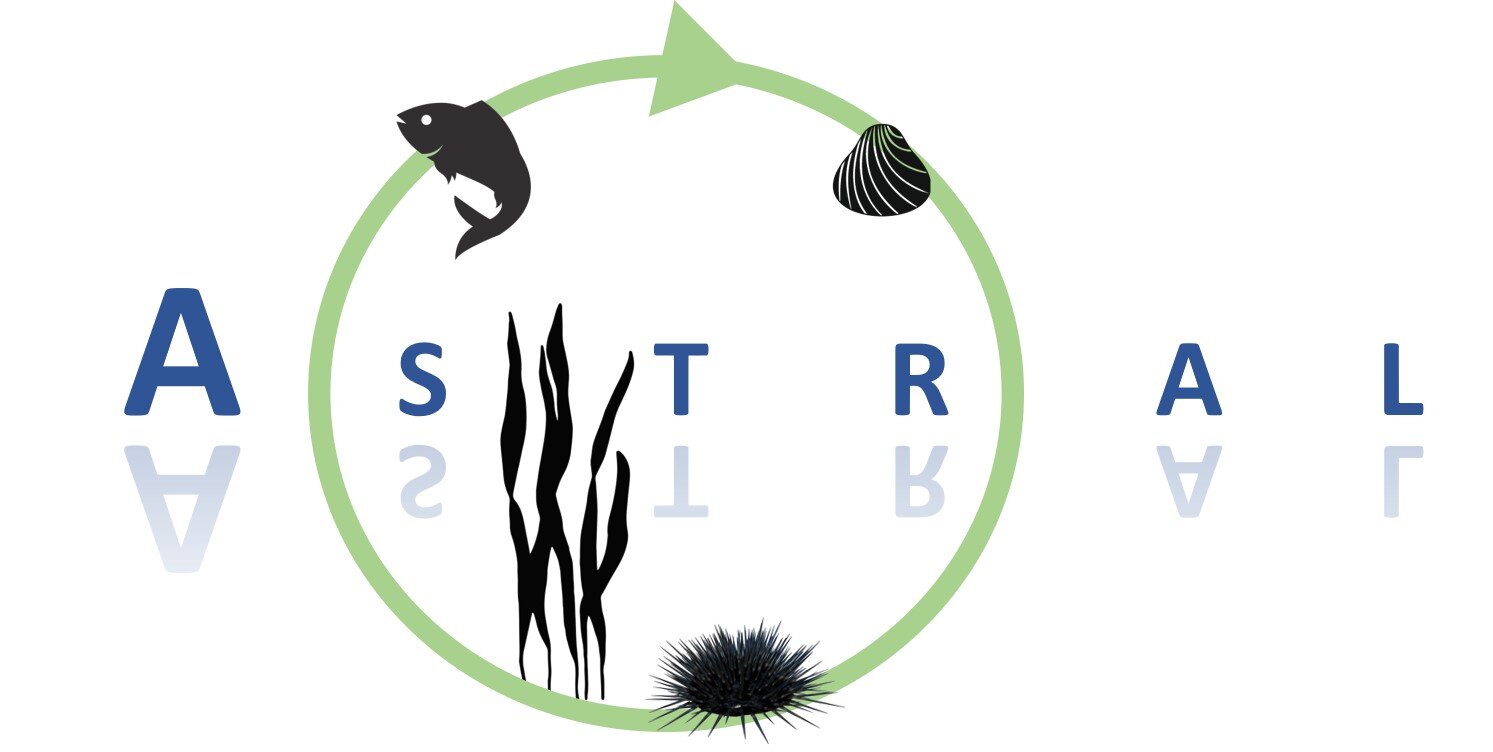ASTRAL SOLUTION N° 1
GREEN AND SUSTAINABLE AQUACULTURE - THE INTEGRATED MULTI-TROPHIC AQUACULTURE (IMTA)
Integrated Multi Trophic Aquaculture (IMTA)
Open water and land-based systems. Aquaculture Species: seaweed, finfish and shellfish.
Long description title:
Farming a combination of lower and higher trophic species, to produce high quality, high-value seafood products where the co-products of one crop (fed animals) are converted into fertilizer, food and energy for the other crops (extractive seaweeds and animals) to promote best practice culture methods and enhance environmental benefits.
IMTA Lab Brazil is a biofloc system. During super-intensive shrimp production without water renewal, there is an accumulation of nutrients excretion/feed degradation and organic matter (biofloc) that are removed mechanically and biologically to maintain the water quality in the production system.
IMTA Lab South Africa utilises a commercial aquafarm growing abalone. The green seaweed Ulva is integrated into the farm system, using dissolved nutrients in the effluent as feed addition and enabling 50% recirculation of seawater, greatly reducing pumping costs. This has proved successful for many years, supplying mostly Asian markets. This system is being extended to grow Ulva with sea urchins. This recirculation of culture water also enables the production of a tropical urchin species in a more temperate environment.
IMTA Lab Scotland operates an IMTA open-water system to optimise cultivation techniques of macroalgae and shellfish and demonstrate an improved economic case for the co-cultivation of kelps and native oysters. Environmental conditions are monitored to improve the cultivation system performance (yield and composition, stocking density and biosecurity). The development of this new cultivation systems explores options to minimise cultivation wastes through improved system design and reducing, reusing, and recycling polymer-based cultivation materials.
IMTA Lab Ireland is developing and validating cost-effective IMTA processes in an open-water system. This IMTA system is exploring the feasibility of the cultivation of Atlantic salmon, lumpfish, European lobster, native oysters, scallops, seaweeds and spiny sea urchins. Production technologies are being optimised to enhance profitability and to mitigate environmental impacts. This lab monitors and assesses animal welfare, biosecurity and health management.
Prospective IMTA lab Argentina is evaluating the feasibility of producing local species (fish, crustacean, mollusc, sea urchin, and mussels) and identifying appropriate sites within the Beagle Channel to facilitate IMTA development.
Typical use:
These systems have the mutual benefits of removing excess nutrients created from the production of higher trophic species and utilizing them in the cultivation of additional produce such as shellfish, seaweeds and invertebrates. These IMTA systems diversify production techniques while the added extractive species mitigate the environmental effects of intensive production.
Typical operational deployment:
Aquaculture production systems for the integrated cultivation of finfish, shellfish and seaweeds in coastal environments or in land-based facilities.
Example of applications envisaged:
Diversification of traditional aquaculture operations.
Introduction of novel species to IMTA production systems.
Success story
IMTA systems provide for the expansion and diversification of aquaculture species, and improved yields in open water and land-based production.
ASTRAL partners responsible
IMTA Lab Ireland: Marine Institute.
IMTA Lab Brazil: FURG.
IMTA lab South Africa: University of Cape Town; Department of Forestry, Fisheries and the Environment; Viking Aquaculture.
IMTA Lab Scotland: SAMS.
IMTA Lab Argentina: CONICET.
